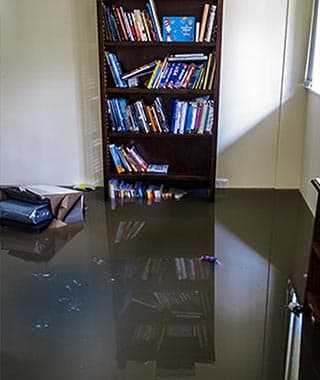DIY Tips: Preventing Mold After a Leak or Flood
Water damage can be a nightmare for homeowners, especially in a city like Miami, Florida where heavy rains and flooding are common. When faced with a leak or flood, one of the most critical concerns is preventing mold growth. Mold not only damages your property but also poses a significant health risk to you and your family. To help you tackle this issue, we’ve compiled a list of DIY tips for preventing mold after a leak or flood. By following these steps, you can protect your home, health, and loved ones.
Understanding the Risks of Mold Growth
Mold can start growing within 24 to 48 hours after a leak or flood, making it crucial to act quickly. Failure to address the moisture issue promptly can lead to widespread mold infestation, which can be expensive and time-consuming to remediate. Moreover, mold spores can trigger various health problems such as respiratory issues, allergies, headaches, and even asthma attacks. It becomes clear that prevention is key to avoiding these potential hazards.
Immediate Steps to Take After a Leak or Flood
1. Stop the Water Source: The first step in preventing mold growth is to stop the water flow. If the leak or flood is caused by a burst pipe or faulty plumbing, shut off the main water supply to your home. This will prevent further damage and help control the moisture levels.
2. Remove Standing Water: If there is standing water in your home, it’s important to remove it as soon as possible. Use a wet/dry vacuum or a pump to extract the water. If the amount of water is extensive, consider contacting a professional water restoration service like Total Care Restoration. They are equipped with the right tools and expertise to extract water effectively.
Drying Out Your Home
1. Increase Ventilation: Proper airflow is crucial for drying out your home. Open windows and doors to allow fresh air to circulate. Additionally, using fans and dehumidifiers can help speed up the drying process.
2. Remove Wet Materials: Any water-damaged materials, such as carpets, furniture, and insulation, should be removed immediately. These items can retain moisture and provide a breeding ground for mold growth. Once removed, they can be dried thoroughly or discarded if damaged beyond repair.
3. Thoroughly Dry Affected Areas: Use towels, mops, and a wet/dry vacuum to remove excess moisture from floors and walls. Pay close attention to hidden or hard-to-reach areas, as mold can grow unnoticed. Consider using a moisture meter to ensure everything is properly dried.
Cleaning and Disinfecting
1. Soap and Water: Once the affected areas are dry, use a mixture of soap and water to clean them thoroughly. This will help remove any remaining dirt and mold spores.
2. Disinfect with a Bleach Solution: To ensure mold spores are killed, disinfect the affected areas with a bleach solution. Mix one cup of household bleach with one gallon of water and apply it to surfaces using a spray bottle or sponge.
3. Consult a Professional Mold Remediation Service: If the mold growth is extensive or if you are unsure of how to handle the situation, it’s best to consult a professional mold remediation service like Total Care Restoration in Miami, Florida.
They will assess the extent of the mold damage and provide expert advice and assistance.
Preventive Measures for Future Mold Growth
1. Fix the Underlying Issue: Identify and fix the source of the leak or flood to prevent future incidents. Whether it’s a faulty plumbing system, roof, or windows, addressing the root cause will help avoid reoccurring water damage.
2. Maintain Proper Ventilation: Ensure proper airflow throughout your home by opening windows, using exhaust fans in bathrooms and kitchens, and utilizing air conditioning systems. Good ventilation helps control humidity levels and discourages mold growth.
3. Monitor Humidity Levels: Invest in a hygrometer to monitor the humidity levels in your home. Ideally, keep the humidity below 50 percent to inhibit mold growth. If necessary, use dehumidifiers to maintain optimal humidity.
Conclusion
Preventing mold growth after a leak or flood is essential to protect your home, health, and loved ones. By following these DIY tips, you can minimize the risk of mold infestation and avoid costly remediation processes.
However, if you encounter extensive mold growth or feel overwhelmed, it’s always best to reach out to a professional mold remediation service like Total Care Restoration. They have the expertise, resources, and experience to handle water, fire, and mold restoration effectively, ensuring a safe and healthy living environment for you and your family.
Remember, acting promptly and taking preventive measures are the keys to preventing mold growth and maintaining a mold-free home.










